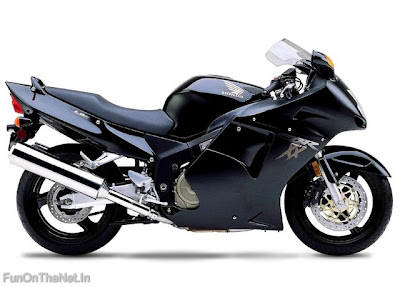Dodge Tomahawk Test Ride
Our Generation 2011
Search This Blog
Wednesday, 28 December 2011
Latest Cars In the World
Latest Cars In the World
AUDI A4
Overview
Model - Audi A4
Body Type - Sedan
Number Of Doors - 4
Seating Capacity - 5
Fuel Capacity - 64 liters (3.2 FSI)/70 liters (2.0 TDI)
Dimensions
Length - 4703 mm (3.2 FSI), 4586 mm (2.0 TDI)
Width - 1826 mm (3.2 FSI), 1772 mm (2.0 TDI)
Height - 1427 mm
Wheelbase - 2808 mm (3.2 FSI), 2642 mm (2.0 TDI)
Ground Clearance - N/A
Minimum Turning Radius - 6.1 m (3.2 FSI), 5.6 m (2.0 TDI)
Weight
Kerb Weight - 1630 kg (3.2 FSI) 1430 kg (2.0 TDI)
Engine
Type - V6 spark-ignition with petrol direct injection engine (3.2 FSI) 4-cylinder in line (2.0 TDI)
Number Of Cylinders - 6
Displacement - 3197 cc
Transmission - 6 Gears, Automatic
Max. Power - 265 PS @ 6500 rpm (3.2 FSI) 140 PS @ 4000 rpm (2.0 TDI)
Max. Torque - 330 Nm @ 3000 rpm (3.2 FSI) 320 Nm @ 1750 rpm (2.0 TDI)
Suspension
Front Suspension - Upper and lower wishbones, tubular anti-roll bar
Rear Suspension - Trapezoidal link, anti roll bar
Brake
Front - Ventilated Discs
Rear - Discs
Steering Type - Rack & Pinion, Power Assisted
Tyre Size - 225/50 R 17 (3.2 FSI) 205/55 R16 (2.0 TDI)
Price Range
USA - $31,450 - $33,550
Canada - $37,800
UK - 22,190
India - INR 37,72.000








Overview
Model - Audi A4
Body Type - Sedan
Number Of Doors - 4
Seating Capacity - 5
Fuel Capacity - 64 liters (3.2 FSI)/70 liters (2.0 TDI)
Dimensions
Length - 4703 mm (3.2 FSI), 4586 mm (2.0 TDI)
Width - 1826 mm (3.2 FSI), 1772 mm (2.0 TDI)
Height - 1427 mm
Wheelbase - 2808 mm (3.2 FSI), 2642 mm (2.0 TDI)
Ground Clearance - N/A
Minimum Turning Radius - 6.1 m (3.2 FSI), 5.6 m (2.0 TDI)
Weight
Kerb Weight - 1630 kg (3.2 FSI) 1430 kg (2.0 TDI)
Engine
Type - V6 spark-ignition with petrol direct injection engine (3.2 FSI) 4-cylinder in line (2.0 TDI)
Number Of Cylinders - 6
Displacement - 3197 cc
Transmission - 6 Gears, Automatic
Max. Power - 265 PS @ 6500 rpm (3.2 FSI) 140 PS @ 4000 rpm (2.0 TDI)
Max. Torque - 330 Nm @ 3000 rpm (3.2 FSI) 320 Nm @ 1750 rpm (2.0 TDI)
Suspension
Front Suspension - Upper and lower wishbones, tubular anti-roll bar
Rear Suspension - Trapezoidal link, anti roll bar
Brake
Front - Ventilated Discs
Rear - Discs
Steering Type - Rack & Pinion, Power Assisted
Tyre Size - 225/50 R 17 (3.2 FSI) 205/55 R16 (2.0 TDI)
Price Range
USA - $31,450 - $33,550
Canada - $37,800
UK - 22,190
India - INR 37,72.000








Top 5 Fastest Bikes in the World
Top 5 Fastest Bikes in the World
Here is the brand new list of the top 5 fastest bikes in the world! Includes the BMW K1200S, Ducati 1098s, Aprilia RSV 1000R Mille, Yamaha YZF R1 and the Honda CBR 1100XX!
5. BMW K1200S 167 mhh (268 km/h)
With enough raw power to shock even the most seasoned adrenaline junky, the K 1200 S hurls you from a dead stop to sixty mph in just 2.8 seconds. Once you're over the whiplash, you'll keep climbing, topping out at speeds that run neck-and-neck with the fastest production motorcycles in the world.



4. Ducati 1098s 169 mph (271 km/h)

The Ducati 1098 is a 1099 cc L-twin sport bike manufactured by Ducati. It was announced on November 8, 2006 for the 2007 model year and replaces the 999. The 1098 makes a manufacturer claimed 160 horsepower, 90.4 ft-lb torque, and weighs 173kg. These figures gives the 1098 the highest torque-to-weight ratio of any production sport bike ever made.


3. Aprilia RSV 1000R Mille 175mph (281 km/h)

The RSV Mille and limited-edition RSV Mille Factory are high performance V-twin powered motorcycles made by Aprilia with a 143 HP 998 cc engine built by the Austrian company Rotax. For 2006. the RSV Mille Factory won the Maxisport category for Masterbike 2006 and overall Masterbike of the year.


2. Yamaha YZF R1 176mph (283 km/h)

The Yamaha YZF-R1 motorcycle, introduced in 1998, was the first significant motorcycle in the true litre class (1,000 cc) "handling arms race" between the Japanese Big Four motorcycle manufacturers (Honda, Kawasaki, Suzuki and Yamaha). When introduced, it took the class closer to a true racing motorcycle, and increased the handling capabilities.


1. Honda CBR 1100XX Super Blackbird 178mph (286 km/h)

Honda CBR 1100 XX Super Blackbird is a sport-touring motorcycle built by Honda. It combines big engine power, Easy operational error-tolerance with touring comfort. The Blackbird production started in 1997 and the last year of production was 2006. The Blackbird was the result of Honda's attempt to build the world's fastest production motorcycle, stealing the crown from Kawasaki.


Labels:
2011,
badshah,
Bike,
Fastest,
generation,
Muhammad Faizan Khan,
our,
Top 5,
World
Exclusive Web Extra: Building A Wildcat .20
Exclusive Web Extra: Building A Wildcat .20
From Brass To Gun.
By Vince SullivanPhotos Mike Cocita
Published In The GUNS Magazine 2012 Special Edition.
On my first prairie dog hunt, the boys and I were shooting every .22-caliber centerfire rifle we owned: from a .218 Bee to .22-250 Remington and everything in between. Then one of the old boys broke out his secret weapon, the “.20 Varmint/Target” (VarTarg). We watched in awe as this little single-shot rifle began dispatching prairie dogs out to 300-plus yards with no problem. Creating a nice starburst action as the dogs vaporized right before our eyes. This is how I was introduced to the .20 VarTarg, and after coming home from that hunt, I had to have a .20-caliber rifle, which would be my first wildcat cartridge.
Nothing but the best components for this project
Before the first .20-caliber, factory cartridge (.204 Ruger) came about, “twenties” were not known by most shooters. Only some dedicated varminters and wildcatters played around with .20-caliber variants. However, in recent years .20-caliber cartridges have become very popular. Today’s small-caliber shooter finds a wide selection of barrels, bullets, reloading dies and accessories. The five most popular .20-caliber cartridges seem to be the .204 Ruger, .20 Tactical, .20 PPC, .20 BR and .20 VarTarg. Probably the most efficient of the bunch is the .20 VarTarg. The average powder charge is only 20 grains, while the other cartridges average between 25.5 to 30.5 grains, depending on the powder you use.
Thanks to the Internet, I was able to do my research to find out how much work it would be to make brass for this little rocket and soon came to the conclusion .221 Remington fireball brass was not readily available. Also the forming dies were expensive and fire forming was more work than I was prepared to do. Looking at other options, I found an article on the “.20 Practical”; the easiest, most cost-effective way to get in the .20-caliber game, without going to a factory-loaded cartridge like the .204 Ruger. Simply put, it’s a .223 Remington case necked down to .20-caliber. Already having a rifle in .223 Remington and a set of full-length sizing dies, all I really needed was one of Redding’s Type-S neck-sizing die in .223 Remington, two or three different diameter neck-sizing bushings and a smaller decapping rod assembly with a .204-diameter sizing button and I was in business.
Barrel
Next came the issue of not wanting to change the barrel on my .223 Rem. I had to find a project rifle with the right bolt-face diameter and action length, and soon came across a rifle chambered in .17 Remington, which would work just fine for my intended purpose. With no real experience in re-barreling a rifle, I was back on the Internet looking at rifle barrel manufacturing companies and the services they offered. They all made .20-caliber barrels, with a variety of different twist rates. But Pac-Nor Barrels was the only manufacturer who offered .20 Practical in the wildcat listings on their website. After talking to other people I know who have Pac-Nor barrels and are very happy with the performance, I shipped off my barreled action to have a new .20-caliber barrel contour matched to the old one. Once returned there would be no more work needed for the rifle, except to put the action back in the stock and do the barrel break-in to Pac-Nor’s recommendations.After receiving all my supplies needed for the project I began brass work. Taking small samples of brass from different manufacturers, you first need a full-length size .223 Rem. die before you start the necking-down process. The OD (outside diameter) of the .223 Rem. neck after sizing is roughly .246″. I necked the brass down in increments, starting with a .235″ diameter bushing first and then going to a .230″ bushing. Depending on the brass manufacturer’s neck thickness you may have to go down to .228″ bushing or smaller to get the right bullet tension you require — .001″ bullet tension seems to work best for me. In my necking down process, a .204 diameter-sizing button was not used because I was using a Wilson case trimmer with the appropriate case holder. I trimmed the case length and inside neck ream of the cartridge to .203 diameter. This would give me 5/10″ diameter difference per side or .001″ bullet tension. (Depending on your brass, your final bushing size may be different.)
Brass
After you find the size you like, the brass will have a slight doughnut at the base of the neck. Seat a bullet in a case with no powder or primer and chamber it in your rifle. Depending on chamber clearance, if the case is a little tight it is best to neck ream or turn the outside of the case up to the shoulder, whichever is easier for you. This will help avoid a possible pressure problem. If after you chamber the cartridge the bolt closes with no interference, it should be ok to shoot as is.After trying all the different brass and getting good results with all, my preference was the Lapua brass because after sizing to .230″, neck reaming the ID (inside diameter) to .203″ and turning the OD enough to even neck thickness by removing just the high spots. The loaded case gives me an OD of .231″. The chamber of the .20 Practical is .233″ in the neck area, which is only .001″ clearance all around. Tight for most, but if you keep your chamber clean it shouldn’t be a problem. After firing I only have to size down my brass .003″, which should result in long brass life.
One of the best-kept secrets to accurate reloading is bullet-seating depth. By precisely regulating the bullet depth and the resulting “jump” (free-travel or clearance between bullet ogive and the barrel lands) can make the difference between OK accuracy, and real tack-driver performance.
Hornady’s Lock-N-Load Precision gauges and modified cases are the easiest tools to use for this task. Starting with a modified case, Hornady makes several series of cases in most of the popular cartridges. If you are shooting a wildcat cartridge you can contact them directly; they will be happy to make you a modified case for your rifle. All you have to do is send two fired cartridge cases for them to look at, along with a check for the dollar amount required. One of the two will be used for your modified case and both are returned to you. This service for me was very prompt and much faster than I expected. Needless to say, I am very happy with the results.
Having the correct tools is critical when building precision rifles and ammo.
Overall Length
To determine the overall length you need an O.A.L. gauge that threads into your modified case and insert a bullet into the case mouth. With the bolt removed, slide the gauge-assembly forward, snug into the chamber. Gently slide the bullet push rod (plunger) forward until the bullet makes contact with the lands. With a little practice, you can feel the bullet make contact against the origin of the rifling. Tighten the thumbscrew on the O.A.L. gauge; this will lock the push rod and bullet in place. Now you can remove the assembly from the gun. The gauge has a measuring slot located directly at the base of your modified case. With a pair of calipers, you can now measure the cartridge’s overall length. To be more precise, a bullet comparator with caliber-specific insert is more accurate because it will register on the bullet ogive — the part of the bullet that makes contact with the rifling first. This overall length operation should be performed with every bullet type and manufacturer you intend to shoot in your rifle; even if they are the same weight because, for example, Hornady’s bullet will be different than Sierra’s as to where the ogive on the bullet is located in its overall length. Overlooking this can result in a pressure difference as it relates to seating depth in your rifle. (Throat is the area from the end of your cartridge case to where the rifling begins.)Most barrel manufacturing companies can give you some good advice. When it comes to bullet jump they generally have a lot of knowledge on this subject, and get good feedback from customers, who are happy to share their success with them. The most common barrel length for varminters is 24″. But after doing some research on optimum barrel length, the average velocity increase from a 24″ to a 26″ barrel was about 150 to 200 fps. I decided to go with a 26″ barrel, hoping to obtain the velocity I was after with a reduced powder charge. If things didn’t go as planned the barrel could always be shortened.
A good starting point for loading the .20 Practical would be to use .204 Ruger information starting on the low end, minus about 2.5 grains of powder, and working up from there. Most powder manufacturing companies have web pages with loading information to help you with a good starting point in your load development. Like most reloaders, I generally start with powder already on hand; here is a list of powders used at the time this article was written. DuPont IMR 4895, IMR 8208 XBR, Ramshot X-Terminator, Hodgdon’s Varget and BL-C(2). All the powders produced 5-shot groups smaller than a nickel at 100 yards, ranging in velocity from 3,500 to just under 4,000 fps with 32-gr. bullets, while keeping the powder charge between 25 to 25.5 grains. The best accuracy for me was attained using DuPont’s IMR 4895, IMR 8208 XBR and Hodgdon’s Varget, all at 25 grains. This kept the velocity under 3,700 fps and group sizes well under a dime at 100 yards with no sign of copper fouling in the bore.
WARNING: For your own safety, ALWAYS reduce all starting charges by 10 percent and work up carefully! Ambient temperature changes, powder lot variations and differences in barrel friction can result in significantly increased pressure.
L to R: .218 Bee, 20 Practical, 22-250 Remington
Accuracy
The goal for me when building this varmint rifle was accuracy, reducing barrel heat and copper fouling of the bore while maintaining good bullet speed. With the .20 Practical you can easily reach velocity of over 4,000 fps. But I’m not sure you will shoot very long before copper fouling the bore. For that reason, I wanted to keep the bullet velocity under 3,800 fps. Hopefully with reduced velocity and powder charge this rifle will shoot all day long without losing accuracy.Now, when the boys and I are relaxing after a day afield they can talk about how they need a .20 Practical.
The SAKO TRG-42
The SAKO TRG-42
Even in boom times, with money no object, there can’t be a big market for a rifle/scope combo retailing at close to $5,000, shooting ammunition at $6 per shot. We’re all after value these days—I know I am—but even when we drive secondhand economy cars it can still be fun to read about the latest Ferrari or Maserati on occasion.
Recently my friend Chris put together a very impressive long-range shooting package, and was kind enough to let me borrow it (provided I supplied my own ammunition!). The rifle is a Sako TRG-42 in .338 Lapua, with the optional muzzlebrake and factory bipod. The scope is a Nightforce 5.5-22×56.
The TRG-42 is built around the Sako long action with three locking lugs. Bolt lift is just 60 degrees, giving lots of clearance between bolt handle and scope. The action feeds from a detachable 5-shot magazine, double stack tapering to a single feed. The straight-line design provides exceptionally smooth feeding. Cycling is so smooth and effortless; I checked a couple of times to see if a round had in fact been fed into the chamber (it had).
The barrel is 27-1/8″ long (not including the muzzlebrake), hammer forged and with a 1:10″ twist in .338 Lapua. The barreled action is bolted to a very strong, rigid aluminum/polyurethane stock. The barrel is free floated with lots of space under the barrel. Forget the old sporting-rifle test of passing a dollar bill under the barrel to see if it is floating freely. There’s enough space for this whole magazine to fit.
The rifle is made for military and police duty, and for long-range competition shooters, with adjustments in just about every conceivable way to fit the individual. The cheekpiece is adjustable both vertically and horizontally. The buttplate can be adjusted for length of pull, height and pitch.
Labels:
2011,
338,
badshah,
generation,
lapua,
Long,
Muhammad Faizan Khan,
our,
range,
rifle
Sunday, 25 December 2011
Islam
For other uses, see Islam (disambiguation).
The Kaaba, in Mecca, Saudi Arabia, is the center of Islam. Muslims from all over the world gather there to pray in unity.
| This article is part of the series: |
| Islam |
|---|
| Beliefs |
| Oneness of God Prophets · Revealed books Angels · Predestination Day of Resurrection |
| Practices |
| Profession of faith · Prayer Fasting · Alms · Pilgrimage |
| Texts and laws |
| Qur'an · Sunnah · Hadith Fiqh · Sharia · Kalam |
| History and leadership |
| Timeline · Muhammad Ahl al-Bayt · Sahaba Rashidun · Imamate Caliphate · Spread of Islam |
| Denominations |
| Sunni · Shia · Sufism Ibadi · Ahmadiyya · Quraniyoon |
| Culture and society |
| Academics · Animals · Art Calendar · Children Dawah · Demographics Festivals · Mosques Philosophy · Politics Science · Women |
| See also |
| Other religions · Glossary |
| Islam portal |
| This article contains Arabic text, written from right to left in a cursive style with some letters joined. Without proper rendering support, you may see unjoined Arabic letters written left-to-right instead of right-to-left or other symbols instead of Arabic script. |
Muslims believe that God is one and incomparable and the purpose of existence is to worship God.[1][2] Muslims also believe that Islam is the complete and universal version of a primordial faith that was revealed at many times and places before, including through Abraham, Moses and Jesus, whom they consider prophets.[3] They maintain that previous messages and revelations have been partially changed or corrupted over time,[4] but consider the Qur'an to be both the unaltered and the final revelation of God.[5] Religious concepts and practices include the five pillars of Islam, which are basic concepts and obligatory acts of worship, and following Islamic law, which touches on virtually every aspect of life and society, providing guidance on multifarious topics from banking and welfare, to warfare and the environment.[6][7]
The majority of Muslims are Sunni, being over 75-90% of all Muslims.[8] The second largest sect, Shia, makes up 10-20%.[9] About 13% of Muslims live in Indonesia, the largest Muslim country,[10] 25% in South Asia,[10] 20% in the Middle East,[11] 2% in Central Asia, 4% in the remaining South East Asian countries, and 15% in Sub-saharan Africa.[12] Sizable communities are also found in China and Russia, and parts of Europe. With over 1.5 billion followers or over 22% of earth's population as of 2009,[12][13] Islam is the second-largest and one of the fastest-growing religions in the world.[14][15]
Contents[hide] |
Etymology and meaning
Further information: S-L-M
Islam is a verbal noun originating from the triliteral root s-l-m which forms a large class of words mostly relating to concepts of wholeness, completion and bonding/joining.[16] In a religious context it means "voluntary submission to God".[17][18] Muslim, the word for an adherent of Islam, is the active participle of the same verb of which Islām is the infinitive. Believers demonstrate submission to God by worshipping God and following his commands, and rejecting polytheism. The word sometimes has distinct connotations in its various occurrences in the Qur'an. In some verses (ayat), there is stress on the quality of Islam as an internal conviction: "Whomsoever God desires to guide, He expands his breast to Islam."[19] Other verses connect islām and dīn (usually translated as "religion"): "Today, I have perfected your religion (dīn) for you; I have completed My blessing upon you; I have approved Islam for your religion."[20] Still others describe Islam as an action of returning to God—more than just a verbal affirmation of faith.[21] Another technical meaning in Islamic thought is as one part of a triad of islam, imān (faith), and ihsān (excellence) where it represents acts of worship (`ibādah) and Islamic law (sharia).[22]Articles of faith
The core beliefs of Islam are that there is only one God – unitary and beyond comprehension – and that Muhammad is His prophet, the last in a series of prophets beginning with Adam. The Qur’an is upheld as the eternal, literal word of God, and revelations to earlier prophets, as seen in the Jewish Torah and Christian Gospels, are believed to have become distorted by human intervention. Muslims believe that the Qur’an was revealed to Muhammad through the angel Gabriel, and belief in angels as God’s servants is part of the Islamic tradition. Belief in the Day of Judgment, when all people will undergo bodily resurrection and be judged by God, is another core tenet. While Sunni and Shi’a Muslims adhere to these basic beliefs, Shi’a also believe in the Imamate, the line of infallible spiritual and political leaders who succeeded Muhammad, beginning with his cousin and son-in-law, Ali.[23]God
Main article: God in Islam
Islam's most fundamental concept is a rigorous monotheism, called tawhīd (Arabic: توحيد). God is described in chapter 112 of the Qur'an as:[24] "Say: He is God, the One and Only; God, the Eternal, Absolute; He begetteth not, nor is He begotten; And there is none like unto Him." (112:1-4) Muslims repudiate the Christian doctrine of the Trinity and divinity of Jesus, comparing it to polytheism, but accept Jesus as a prophet. In Islam, God is beyond all comprehension and Muslims are not expected to visualize God. God is described and referred to by certain names or attributes, the most common being Al-Rahmān, meaning "The Compassionate" and Al-Rahīm, meaning "The Merciful" (See Names of God in Islam).[25]Muslims believe that creation of everything in the universe is brought into being by God’s sheer command “‘Be’ and so it is.”[26][27] and that the purpose of existence is to worship God.[2][28] He is viewed as a personal God who responds whenever a person in need or distress calls Him.[26][29] There are no intermediaries, such as clergy, to contact God who states “We are nearer to him than (his) jugular vein”[30]
Allāh is the term with no plural or gender used by Muslims and Arabic speaking Christians and Jews meaning the one God, while ʾilāh (Arabic: إله) is the term used for a deity or a god in general.[31] Other non-Arab Muslims might use different names as much as Allah, for instance "Tanrı" in Turkish or "Khodā" in Persian.
Angels
Main article: Islamic view of angels
Belief in angels is fundamental to the faith of Islam. The Arabic word for angel (Arabic: ملاك malak) means "messenger", like its counterparts in Hebrew (malakh) and Greek (angelos). According to the Qur'an, angels do not possess free will, and worship God in total obedience.[32] Angels' duties include communicating revelations from God, glorifying God, recording every person's actions, and taking a person's soul at the time of death. They are also thought to intercede on man's behalf. The Qur'an describes angels as "messengers with wings—two, or three, or four (pairs): He [God] adds to Creation as He pleases..."[33]Revelations
Main articles: Islamic holy books and Qur'an
See also: History of the Qur'an
The Islamic holy books are the records which most Muslims believe were dictated by God to various prophets. Muslims believe that parts of the previously revealed scriptures, the Tawrat (Torah) and the Injil (Gospels), had become distorted—either in interpretation, in text, or both.[4] The Qur'an (literally, “Reading” or “Recitation”) is viewed by Muslims as the final revelation and literal Word of God and is widely regarded as the finest piece of literature work in the Arabic language.[34][35][36] Muslims believe that the verses of the Qur'an were revealed to Muhammad by God through the archangel Gabriel (Jibrīl). On many occasions between 610 and his death on June 8, 632.[37] The Qur'an was reportedly written down by Muhammad's companions (sahabah) while he was alive, although the prime method of transmission was orally. It was compiled in the time of Abu Bakr, the first caliph, and was standardized under the administration of Uthman, the third caliph.The Qur'an is divided into 114 suras, or chapters, which combined, contain 6,236 āyāt, or verses. The chronologically earlier suras, revealed at Mecca, are primarily concerned with ethical and spiritual topics. The later Medinan suras mostly discuss social and moral issues relevant to the Muslim community.[38] The Qur'an is more concerned with moral guidance than legal instruction, and is considered the "sourcebook of Islamic principles and values".[39] Muslim jurists consult the hadith, or the written record of Prophet Muhammad's life, to both supplement the Qur'an and assist with its interpretation. The science of Qur'anic commentary and exegesis is known as tafsir.[40]
When Muslims speak in the abstract about "the Qur'an", they usually mean the scripture as recited in Arabic rather than the printed work or any translation of it. To Muslims, the Qur'an is perfect only as revealed in the original Arabic; translations are necessarily deficient because of language differences, the fallibility of translators, and the impossibility of preserving the original's inspired style. Translations are therefore regarded only as commentaries on the Qur'an, or "interpretations of its meaning", not as the Qur'an itself.[41]
Prophets
| Hadith collections | ||||
| ||||
Main article: Prophets of Islam
Muslims identify the prophets of Islam (Arabic: نبي nabī ) as those humans chosen by God to be his messengers. According to the Qur'an[42] the descendants of Abraham and Imran were chosen by God to bring the "Will of God" to the peoples of the nations. Muslims believe that prophets are human and not divine, though some are able to perform miracles to prove their claim. Islamic theology says that all of God's messengers preached the message of Islam—submission to the Will of God. The Qur'an mentions the names of numerous figures considered prophets in Islam, including Adam, Noah, Abraham, Moses and Jesus, among others.[43] Muslims believe that God finally sent Muhammad (Seal of the Prophets) to convey the divine message to the whole world (to sum up and to finalize the word of God). In Islam, the "normative" example of Muhammad's life is called the Sunnah (literally "trodden path"). This example is preserved in traditions known as hadith ("reports"), which recount his words, his actions, and his personal characteristics. Hadith Qudsi is a sub-category of hadith, regarded as the words of God repeated by Muhammad differring from the Quran in that they are "expressed in Muhammad's words", whereas the quran are the "direct words of God". The classical Muslim jurist ash-Shafi'i (d. 820) emphasized the importance of the Sunnah in Islamic law, and Muslims are encouraged to emulate Muhammad's actions in their daily lives. The Sunnah is seen as crucial to guiding interpretation of the Qur'an. Six of these collections, compiled in the 3rd century AH (9th century CE), came to be regarded as especially authoritative by the largest group in Islām, the Sunnites. Another large group, the Shīʾah, has its own Ḥadīth contained in four canonical collections.[26]Resurrection and judgment
Main article: Qiyama
Belief in the "Day of Resurrection", Yawm al-Qiyāmah (Arabic: يوم القيامة) is also crucial for Muslims. They believe the time of Qiyāmah is preordained by God but unknown to man. The trials and tribulations preceding and during the Qiyāmah are described in the Qur'an and the hadith, and also in the commentaries of scholars. The Qur'an emphasizes bodily resurrection, a break from the pre-Islamic Arabian understanding of death.[44]On Yawm al-Qiyāmah, Muslims believe all mankind will be judged on their good and bad deeds. The Qur'an lists several sins that can condemn a person to hell, such as disbelief (Arabic: كفر Kufr), and dishonesty; however, the Qur'an makes it clear God will forgive the sins of those who repent if He so wills.[45] Good deeds, such as charity and prayer, will be rewarded with entry to heaven. Muslims view heaven as a place of joy and bliss, with Qur'anic references describing its features and the physical pleasures to come. Mystical traditions in Islam place these heavenly delights in the context of an ecstatic awareness of God.[46]
Yawm al-Qiyāmah is also identified in the Qur'an as Yawm ad-Dīn (Arabic: يوم الدين), "Day of Religion";[47] as-sāʿah (Arabic: الساعة), "the Last Hour";[48] and al-Qāriʿah (Arabic: القارعة), "The Clatterer."[49]
Predestination
Main article: Predestination in Islam
In accordance with the Islamic belief in predestination, or divine preordainment (al-qadā wa'l-qadar), God has full knowledge and control over all that occurs. This is explained in Qur'anic verses such as "Say: 'Nothing will happen to us except what Allah has decreed for us: He is our protector'..."[50] For Muslims, everything in the world that occurs, good or evil, has been preordained and nothing can happen unless permitted by God. According to Muslim theologians, although events are pre-ordained, man possesses free will in that he has the faculty to choose between right and wrong, and is thus responsible for his actions. According to Islamic tradition, all that has been decreed by God is written in al-Lawh al-Mahfūz, the "Preserved Tablet".[51]Five pillars
Main article: Five Pillars of Islam
The Pillars of Islam (arkan al-Islam; also arkan ad-din, "pillars of religion") are five basic acts in Islam, considered obligatory for all believers. The Quran presents them as a framework for worship and a sign of commitment to the faith. They are (1) the shahadah (creed), (2) daily prayers (salat), (3) almsgiving (zakah), (4) fasting during Ramadan and (5) the pilgrimage to Mecca (hajj) at least once in a lifetime. The Shia and Sunni sects both agree on the essential details for the performance of these acts.[52]Testimony
Main article: Shahadah
The Shahadah,[53] which is the basic creed of Islam that must be recited under oath with the specific statement: "'ašhadu 'al-lā ilāha illā-llāhu wa 'ašhadu 'anna muħammadan rasūlu-llāh", or "I testify there are no deities other than God alone and I testify that Muhammad is the Messenger of God." This testament is a foundation for all other beliefs and practices in Islam. Muslims must repeat the shahadah in prayer, and non-Muslims wishing to convert to Islam are required to recite the creed.[54]Prayer
Main article: Salah
See also: Mosque
Ritual prayers, called Ṣalāh or Ṣalāt (Arabic: صلاة), must be performed five times a day. Salah is intended to focus the mind on God, and is seen as a personal communication with him that expresses gratitude and worship. Salah is compulsory but flexibility in the specifics is allowed depending on circumstances. The prayers are recited in the Arabic language, and consist of verses from the Qur'an.[55]A mosque is a place of worship for Muslims, who often refer to it by its Arabic name, masjid. The word mosque in English refers to all types of buildings dedicated to Islamic worship, although there is a distinction in Arabic between the smaller, privately owned mosque and the larger, "collective" mosque (masjid jāmi`).[56] Although the primary purpose of the mosque is to serve as a place of prayer, it is also important to the Muslim community as a place to meet and study. Modern mosques have evolved greatly from the early designs of the 7th century, and contain a variety of architectural elements such as minarets.[57]
Fasting
Main article: Sawm
Further information: Sawm of Ramadan
Fasting, (Arabic: صوم ṣawm), from food and drink (among other things) must be performed from dawn to dusk during the month of Ramadhan. The fast is to encourage a feeling of nearness to God, and during it Muslims should express their gratitude for and dependence on him, atone for their past sins, and think of the needy. Sawm is not obligatory for several groups for whom it would constitute an undue burden. For others, flexibility is allowed depending on circumstances, but missed fasts usually must be made up quickly.[58]Alms-giving
"Zakāt" (Arabic: زكاة zakāh "alms") is giving a fixed portion of accumulated wealth by those who can afford it to help the poor or needy, and also to assist the spread of Islam. It is considered a religious obligation (as opposed to voluntary charity) that the well-off owe to the needy because their wealth is seen as a "trust from God's bounty". The Qur'an and the hadith also suggest a Muslim give even more as an act of voluntary alms-giving (ṣadaqah).[59]Pilgrimage
Main article: Hajj
The pilgrimage, called the ḥajj (Arabic: حج ḥaǧǧ) during the Islamic month of Dhu al-Hijjah in the city of Mecca. Every able-bodied Muslim who can afford it must make the pilgrimage to Mecca at least once in his or her lifetime. Rituals of the Hajj include walking seven times around the Kaaba, touching the black stone if possible, walking or running seven times between Mount Safa and Mount Marwah, and symbolically stoning the Devil in Mina.[60]Law and jurisprudence
| Part of a series on |
| Islamic jurisprudence (Fiqh) |
|---|
| Islamic studies |
Islamic law covers all aspects of life, from matters of state, like governance and foreign relations, to issues of daily living. The Qur'an defines hudud as the punishments for five specific crimes: unlawful intercourse, false accusation of unlawful intercourse, consumption of alcohol, theft, and highway robbery. Though not in the Qur'an, there are also laws against apostasy (although Muslims disagree over punishment).[62] The Qur'an and Sunnah also contain laws of inheritance, marriage, and restitution for injuries and murder, as well as rules for fasting, charity, and prayer. However, these prescriptions and prohibitions may be broad, so their application in practice varies. Islamic scholars (known as ulema) have elaborated systems of law on the basis of these rules and their interpretations.[63] Over the years there have been changing views on Islamic law but many such as Zahiri and Jariri[clarification needed] have since died out.[64][65]
Fiqh, or "jurisprudence", is defined as the knowledge of the practical rules of the religion. Much of it has evolved to prevent innovation or alteration in the original religion, known as bid'ah. The method Islamic jurists use to derive rulings is known as usul al-fiqh ("legal theory", or "principles of jurisprudence"). According to Islamic legal theory, law has four fundamental roots, which are given precedence in this order: the Qur'an, the Sunnah (the practice of Muhammad), the consensus of the Muslim jurists (ijma), and analogical reasoning (qiyas). For early Islamic jurists, theory was less important than pragmatic application of the law. In the 9th century, the jurist ash-Shafi'i provided a theoretical basis for Islamic law by codifying the principles of jurisprudence (including the four fundamental roots) in his book ar-Risālah.[66]
Jurists
There are many terms in Islam to refer to religiously sanctioned positions of Islam, but "jurist" generally refers to the educated class of Muslim legal scholars engaged in the several fields of Islamic studies. In a broader sense, the term ulema is used to describe the body of Muslim clergy who have completed several years of training and study of Islamic sciences, such as a mufti, qadi, faqih, or muhaddith. Some Muslims include under this term the village mullahs, imams, and maulvis—who have attained only the lowest rungs on the ladder of Islamic scholarship; other Muslims would say that clerics must meet higher standards to be considered ulema. Some Muslims practise ijtihad whereby they do not accept the authority of clergy.[67]Etiquette and diet
Main articles: Adab (behavior) and Islamic dietary laws
Many practices fall in the category of adab, or Islamic etiquette. This includes greeting others with "as-salamu `alaykum" ("peace be unto you"), saying bismillah ("in the name of God") before meals, and using only the right hand for eating and drinking. Islamic hygienic practices mainly fall into the category of personal cleanliness and health. Circumcision of male offspring is also practiced in Islam. Islamic burial rituals include saying the Salat al-Janazah ("funeral prayer") over the bathed and enshrouded dead body, and burying it in a grave. Muslims are restricted in their diet. Prohibited foods include pork products, blood, carrion, and alcohol. All meat must come from a herbivorous animal slaughtered in the name of God by a Muslim, Jew, or Christian, with the exception of game that one has hunted or fished for oneself. Food permissible for Muslims is known as halal food.[68]Family life
See also: Women in Islam
The basic unit of Islamic society is the family, and Islam defines the obligations and legal rights of family members. The father is seen as financially responsible for his family, and is obliged to cater for their well-being. The division of inheritance is specified in the Qur'an, which states that most of it is to pass to the immediate family, while a portion is set aside for the payment of debts and the making of bequests. With some exceptions, the woman's share of inheritance is generally half of that of a man with the same rights of succession.[69] Marriage in Islam is a civil contract which consists of an offer and acceptance between two qualified parties in the presence of two witnesses. The groom is required to pay a bridal gift (mahr) to the bride, as stipulated in the contract.[70] A man may have up to four wives if he believes he can treat them equally, while a woman may have only one husband. In most Muslim countries, the process of divorce in Islam is known as talaq, which the husband initiates by pronouncing the word "divorce".[71] Scholars disagree whether Islamic holy texts justify traditional Islamic practices such as veiling and seclusion (purdah). Starting in the 20th century, Muslim social reformers argued against these and other practices such as polygamy in Islam, with varying success. At the same time, many Muslim women have attempted to reconcile tradition with modernity by combining an active life with outward modesty. Certain Islamist groups like the Taliban have sought to continue traditional law as applied to women.[72]Government
Mainstream Islamic law does not distinguish between "matters of church" and "matters of state"; the scholars function as both jurists and theologians. In practice, Islamic rulers frequently bypassed the Sharia courts with a parallel system of so-called "Grievance courts" over which they had sole control.[citation needed] As the Muslim world came into contact with Western secular ideals, Muslim societies responded in different ways. Turkey has been governed as a secular state ever since the reforms of Mustafa Kemal Atatürk in 1923. In contrast, the 1979 Iranian Revolution replaced a mostly secular regime with an Islamic republic led by the Ayatollah Khomeini.[73]Military
Main articles: Jihad and Islamic military jurisprudence
Jihad means "to strive or struggle" (in the way of God) and is considered the "Sixth Pillar of Islam" by a minority of Sunni Muslim authorities.[74] Jihad, in its broadest sense, is classically defined as "exerting one's utmost power, efforts, endeavors, or ability in contending with an object of disapprobation." Depending on the object being a visible enemy, the devil, and aspects of one's own self (such as sinful desires), different categories of jihad are defined.[75] Jihad, when used without any qualifier, is understood in its military aspect.[76][77] Jihad also refers to one's striving to attain religious and moral perfection.[78] Some Muslim authorities, especially among the Shi'a and Sufis, distinguish between the "greater jihad", which pertains to spiritual self-perfection, and the "lesser jihad", defined as warfare.[79]Within Islamic jurisprudence, jihad is usually taken to mean military exertion against non-Muslim combatants in the defense or expansion of the Ummah. The ultimate purpose of military jihad is debated, both within the Islamic community and without, with some claiming that it only serves to protect the Ummah, with no aspiration of offensive conflict, whereas others have argued that the goal of Jihad is global conquest. Jihad is the only form of warfare permissible in Islamic law and may be declared against terrorists, criminal groups, rebels, apostates, and leaders or states who oppress Muslims or hamper proselytizing efforts.[80][81] Most Muslims today interpret Jihad as only a defensive form of warfare: the external Jihad includes a struggle to make the Islamic societies conform to the Islamic norms of justice.[82]
Under most circumstances and for most Muslims, jihad is a collective duty (fard kifaya): its performance by some individuals exempts the others. Only for those vested with authority, especially the sovereign (imam), does jihad become an individual duty. For the rest of the populace, this happens only in the case of a general mobilization.[81] For most Shias, offensive jihad can only be declared by a divinely appointed leader of the Muslim community, and as such is suspended since Muhammad al-Mahdi's[83] occultation in 868 AD.[84]
History
Main articles: Muslim history and Spread of Islam
Muhammad (610–632)
Main article: Muhammad
See also: Early social changes under Islam
Al-Masjid al-Nabawi (the Mosque of the Prophet) in Medina, Saudi Arabia, is the 2nd most sacred Mosque in Islam.
Rise of the caliphate and civil war (632–750)
The Muslim Caliphate, 750 CE
The Great Mosque of Kairouan, established in 670 in Kairouan, Tunisia, represents one of the best architectural examples of Islamic civilization.[90]
These disputes over religious and political leadership would give rise to schism in the Muslim community. The majority accepted the legitimacy of the three rulers prior to Ali, and became known as Sunnis. A minority disagreed, and believed that Ali was the only rightful successor; they became known as the Shi'a.[93] After Mu'awiyah's death in 680, conflict over succession broke out again in a civil war known as the "Second Fitna". The Umayyad dynasty conquered the Maghrib, the Iberian Peninsula, Narbonnese Gaul and Sindh.[94] The local population of Jews and indigenous Christians, persecuted as religious minorities and taxed heavily, often aided Muslims to take over their lands from the Byzantines and Persians, resulting in exceptionally speedy conquests.[95][96]
The Umayyad aristocracy viewed Islam as a religion for Arabs only;[97] the economy of the Umayyad empire was based on the assumption that a majority of non-Muslims (Dhimmis) would pay taxes to the minority of Muslim Arabs. A non-Arab who wanted to convert to Islam was supposed to first become a client of an Arab tribe. Even after conversion, these new Muslims (mawali) did not achieve social and economic equality with the Arabs. The descendants of Muhammad's uncle Abbas ibn Abd al-Muttalib rallied discontented mawali, poor Arabs, and some Shi'a against the Umayyads and overthrew them with the help of the general Abu Muslim, inaugurating the Abbasid dynasty in 750 and moved the capital to Baghdad.[98]
Abbasid era (750–1258)
See also: Islamic Golden Age
Built during the Ghurids in the 13th century, the Friday Mosque of Herat is one of the oldest mosques in Afghanistan.
The major hadith collections were compiled. The Ja'fari jurisprudence was formed from the teachings of Ja'far al-Sadiq while the four Sunni Madh'habs, the Hanafi, Hanbali, Maliki and Shafi'i, were established around the teachings of Abū Ḥanīfa, Ahmad bin Hanbal, Malik ibn Anas and al-Shafi'i respectively. Al-Shafi'i also codified a method to establish the reliability of hadith.[101] Al-Tabari and Ibn Kathir completed the most commonly cited commentaries on the Quran, the Tafsir al-Tabari in the 9th century and the Tafsir ibn Kathir in the 14th century, respectively. Philosophers Al-Farabi and Ibn Sina (Avicenna) sought to incorporate Greek principles into Islamic theology, while others like Abu Hamid al-Ghazzali argued against them and ultimately prevailed.[102]
Caliphs such as Mamun al Rashid and Al-Mu'tasim made the mutazilite philosophy an official creed and imposed it upon Muslims to follow. Mu'tazila was a Greek influenced school of speculative theology called kalam, which refers to dialectic.[103] Many orthodox Muslims rejected mutazilite doctrines and condemned their idea of the creation of the Quran. In inquisitions, Imam Hanbal refused to conform and was tortured and sent to a unlit Baghdad prison cell for nearly thirty months.[104] The other branch of kalam was the Ash'ari school founded by Abu al-Hasan al-Ash'ari. Some Muslims began to question the piety of indulgence in a worldly life and emphasized poverty, humility and avoidance of sin based on renunciation of bodily desires. Ascetics such as Hasan al-Basri would inspire a movement that would evolve into Sufism.[105] Beginning in the 13th century, Sufism underwent a transformation, largely because of efforts to legitimize and reorganize the movement by Al-Ghazali, who developed the model of the Sufi order—a community of spiritual teachers and students.[106]
Islamic civilization flourished in what is sometimes referred to as the "Islamic Golden Age".[107] Public hospitals established during this time (called Bimaristan hospitals), are considered "the first hospitals" in the modern sense of the word,[108][109] and issued the first medical diplomas to license doctors of medicine.[110][111] The Guinness World Records recognizes the University of Al Karaouine, founded in 859, as the world's oldest degree-granting university.[112] The doctorate is argued to date back to the licenses to teach in law schools.[113] Standards of experimental and quantification techniques, as well as the tradition of citation,[114] were introduced to the scientific process.[115] An important pioneer in this, Ibn Al-Haytham is regarded as the father of the modern scientific method and often referred to as the "world’s first true scientist."[116][117] The government paid scientists the equivalent salary of professional athletes today.[114] Discoveries include gathering the data used by Copernicus for his heliocentric conclusions and Al-Jahiz’s proposal of the theory of natural selection.[118][119] Rumi wrote some of the finest Persian poetry and is still one of the best selling poets in America.[120][121] Legal institutions introduced include the trust and charitable trust (Waqf).[122][123]
The first Muslims states independent of a unified Muslim state emerged from the Berber Revolt (739/740-743). In 836, the capital was moved to Samarra by Caliph Al-Mu'tasim and it was returned to Baghdad in 892. In 930, the Ismaili group known as the Qarmatians unsuccessfully rebelled against the Abbassids, sacked Mecca and stole the Black Stone.[124] By 1055 the Seljuq Turks had eliminated the Abbasids as a military power but continued the caliph's titular authority.[125] The Mongol Empire finally put an end to the Abbassid dynasty, killing its last Caliph at the Battle of Baghdad in 1258.
Fall of Abbasids to end of caliphate (1258–1924)
While cultural styles used to radiate from Baghdad, the Mongol destruction of Baghdad led Egypt to become the Arab heartland while Central Asia went its own way and was experiencing another golden age. The Safavid dynasty of Persia made ties with India and Persian poetry rose to new heights while Arabic poetry was in state of decline. The Muslims in China who were descended from earlier immigration began to assimilate by adopting Chinese names and culture while Nanjing became an important center of Islamic study.[130][131]
The Muslim world was generally in political decline, especially relative to the non-Islamic European powers. Large areas of Islamic Central Asia were seriously depopulated largely as a result of Mongol destruction.[132] The Black Death ravaged much of the Islamic world in the mid-14th century.[133][134] This decline was evident culturally; while Taqi al-Din founded an observatory in Istanbul and the Jai Singh Observatory was built in the 18th century, there was not a single Muslim country with a major observatory by the twentieth century.[135] The Reconquista, launched against Muslim principalities in Iberia, succeeded in 1492 and Muslim Italian states were lost to the Normans. By the 19th century the British Empire had formally ended the last Mughal dynasty.[136] The Ottoman era ended after World War I and the Caliphate was abolished in 1924.[137][138]
Reform and revival movements during this period include an 18th century Salafi movement led by Ibn Abd al-Wahhab in today's Saudi Arabia. Referred to as Wahhabi, their self designation is Muwahiddun (unitarians). Building upon earlier efforts such as those by the logician Ibn Taymiyyah and Ibn al-Qayyim, the movement seeks to uphold monotheism and purify Islam of later innovations. Their zeal against idolatrous shrines led to the destruction of sacred tombs in Mecca and Medina, including those of the Prophet and his Companions.[139] In the 19th century, the Deobandi and Barelwi movements were initiated.
Modern times (1924–present)
Further information: Iranian revolution and Islamic revival
Contact with industrialized nations brought Muslim populations to new areas through economic migration. Many Muslims migrated as indentured servants, from mostly India and Indonesia, to the Caribbean, forming the largest Muslim populations by percentage in the Americas.[140] The resulting urbanization and increase in trade in sub-Saharan Africa brought Muslims to settle in new areas and spread their faith, likely doubling the Muslims population between 1869 and 1914.[141] Muslim immigrants, many as guest workers, began arriving, largely from former colonies, into Western European nations in the 1960s and 1970s.New Muslim intellectuals are beginning to arise, and are increasingly separating perennial Islamic beliefs from archaic cultural traditions.[142] Liberal Islam is a movement that attempts to reconcile religious tradition with modern norms of secular governance and human rights. Its supporters say that there are multiple ways to read Islam's sacred texts, and stress the need to leave room for "independent thought on religious matters".[143] Women's issues receive a significant weight in the modern discourse on Islam because the family structure remains central to Muslim identity.[144] Also of issue is the assimilation of Muslim communities and Islamophobia in host countries.[145] Andrew Rippin states that while Muslims believe that Islam stands for both men and women, the social reality suggests otherwise.[144] Christopher Hitchens states that Islam is "dogmatic," and "the fact remains that Islam's core claim – to be unimprovable and final – is at once absurd." Such claims have been challenged by many Muslim scholars and writers including Fazlur Rahman Malik,[146] Syed Ameer Ali,[147] Ahmed Deedat,[148] Yusuf Estes and Tariq Ramadan.
Islam often fell under repression by secular powers. Chinese Red Guards closed many mosques and destroyed Qurans and Communist Albania became the first country to ban the practice of every religion.[149][150] In Turkey, the military carried out coups to oust Islamist governments and headscarves were, as well as in Tunisia, banned in official buildings.[151][152] About half a million Muslims were killed in Cambodia by communists whom, it is argued, viewed them as their primary enemy and wished to exterminate them since they stood out and worshipped their own god.[153] However, Islamist groups such as the Muslim Brotherhood advocate Islam as a comprehensive political solution, often in spite of being banned.[154] Jamal-al-Din al-Afghani, along with his acolyte Muhammad Abduh, have been credited as forerunners of the Islamic revival.[155] In Iran, revolution replaced secular regime with an Islamic state. In Turkey, the Islamist AK Party has democratically been in power for about a decade, while Islamist parties are doing well in elections following the Arab spring.[156] The Organisation of Islamic Cooperation (OIC), consisting of Muslim countries, was established in 1969 after the burning of the Al-Aqsa Mosque in Jerusalem.[157]
Piety appears to be deepening worldwide.[158][159][160] Orthodox groups are sometimes well funded and are growing at the expense of traditional groups.[161] In many places, the prevalence of the Islamic veil is growing increasingly common [162] and the percentage of Muslims favoring Sharia laws has increased.[163] With religious guidance increasingly available electronically, Muslims are able to access views that are strict enough for them rather than rely state clerics who are often seen as stooges.[159] Some organizations began using the media to promote Islam such as the 24-hour TV channel, Peace TV.[164] Perhaps as a result of these efforts, most experts agree that Islam is growing faster than any other faith in East and West Africa.[165][166]
Denominations
Main article: Islamic schools and branches
Some of the major movements in Islam.
Sunni
Main article: Sunni Islam
The largest denomination in Islam is Sunni Islam, which makes up over 75% to 90% of all Muslims.[8] Sunni Muslims also go by the name Ahl as-Sunnah which means "people of the tradition [of Muhammad]".[26][15] In Arabic language, as-Sunnah literally means "tradition" or "path". The Qur'an and the Sunnah (the example of Muhammad's life) as recorded in hadith are the primary foundations of Sunni doctrine. According to Sunni Islam, the "normative" example of Muhammad's life is called the Sunnah (literally "trodden path"). This example is preserved in traditions known as hadith ("reports"), which recount his words, his actions, and his personal characteristics. The classical Muslim jurist ash-Shafi'i (d. 820) emphasized the importance of the Sunnah in Islamic law, and Muslims are encouraged to emulate Muhammad's actions in their daily lives. The Sunnah is seen as crucial to guiding interpretation of the Qur'an.[167] Two major hadith collections are Sahih Bukhari and Sahih Muslim. Sunnis believe that the first four caliphs were the rightful successors to Muhammad; since God did not specify any particular leaders to succeed him, those leaders had to be elected. Sunnis believe that a caliph should be chosen by the whole community.[168]There are four recognised madh'habs (schools of thought): Hanafi, Maliki, Shafi'i, and Hanbali. All four accept the validity of the others and a Muslim may choose any one that he or she finds agreeable.[169] The Salafi (also known as Ahl al-Hadith, or Wahhabi by its adversaries) is a ultra-orthodox Islamic movement which takes the first generation of Muslims as exemplary models.[170]
Shia
Main article: Shia Islam
The Shi'a constitute 10–20% of Islam and are its second-largest branch.[9] They believe in the political and religious leadership of Imams from the progeny of Ali ibn Abi Talib, who Shia's believe was the true successor after Muhammad. They believe that Ali ibn Abi Talib was the first Imam (leader), rejecting the legitimacy of the previous Muslim caliphs. To most Shias, an Imam rules by right of divine appointment and holds "absolute spiritual authority" among Muslims, having final say in matters of doctrine and revelation. Shias regard Ali as the prophet's true successor and believe that a caliph is appointed by divine will.[171] Although the Shi'as share many core practices with the Sunni, the two branches disagree over validity of specific collections of hadith, with Shias preferring hadiths attributed to the Ahl al-Bayt.Shia Islam has several branches, the largest of which is the Twelvers (iṯnāʿašariyya). Although the Shi'as share many core practices with the Sunni, the two branches disagree over the proper importance and validity of specific collections of hadith. The Twelver Shi'a follow a legal tradition called Ja'fari jurisprudence.[172] Other smaller groups include the Ismaili and Zaidi, who differ from Twelvers in both their line of successors and theological beliefs.[173] Other smaller branches include the Alawites and Alevi. Branches of Shia Islam which deviate from mainstream Shia doctrine are described by orthodox Shias as Ghulat.
Sufism
Main article: Sufism
Sufism is a mystical-ascetic approach to Islam that seeks to find divine love and knowledge through direct personal experience of God.[174] By focusing on the more spiritual aspects of religion, Sufis strive to obtain direct experience of God by making use of "intuitive and emotional faculties" that one must be trained to use.[175] However, Sufism has been criticized by the Salafi sect for what they see as an unjustified religious innovation.[176] Many Sufi orders, or tariqas, can be classified as either Sunni or Shi'a, but others classify themselves simply as 'Sufi'.[177][178]Minor denominations
- Ahmadiyya is an Messianic movement founded by Mirza Ghulam Ahmad that began in India in the late 19th century and is practiced by millions of people around the world.[179]
- The Ibadi is a sect that dates back to the early days of Islam and is a branch of kharijite. Unlike most Kharijite groups, Ibadism does not regard sinful Muslims as unbelievers.
- The Quranists are Muslims who generally reject the Hadith.
- Yazdânism is seen as a blend of local Kurdish beliefs and Islamic Sufi doctrine introduced to Kurdistan by Sheikh Adi ibn Musafir in the 12th century.
- Nation of Islam is a mainly African-American new religious movement founded in Detroit.
Demographics
Main articles: Muslim world and Ummah
See also: List of countries by Muslim population
A comprehensive 2009 demographic study of 232 countries and territories reported that 23% of the global population, or 1.57 billion people, are Muslims. Of those, it's estimated over 75–90% are Sunni and 10–20% are Shi'a,[180][26][12] with a small minority belonging to other sects. Approximately 50 countries are Muslim-majority,[181] and Arabs account for around 20% of all Muslims worldwide.[182] Between 1900 and 1970 the global Muslim community grew from 200 million to 551 million;[183] between 1970 and 2009 Muslim population increased more than three times to 1.57 billion.The majority of Muslims live in Asia and Africa.[184] Approximately 62% of the world's Muslims live in Asia, with over 683 million adherents in Indonesia, Pakistan, India, and Bangladesh.[185][186] In the Middle East, non-Arab countries such as Turkey and Iran are the largest Muslim-majority countries; in Africa, Egypt and Nigeria have the most populous Muslim communities.[187]
Most estimates indicate that the People's Republic of China has approximately 20 to 30 million Muslims (1.5% to 2% of the population).[188][189][190][191] However, data provided by the San Diego State University's International Population Center to U.S. News & World Report suggests that China has 65.3 million Muslims.[192] Islam is the second largest religion after Christianity in many European countries,[193] and is slowly catching up to that status in the Americas, with between 2,454,000, according to Pew Forum, and approximately 7 million Muslims, according to the Council on American-Islamic Relations (CAIR), in the United States.[12][194]
Culture
The interior of the Great Mosque of Córdoba, one of the finest examples of Ummayad architecture in Spain.
Main article: Islamic culture
Architecture
Main article: Islamic architecture
Perhaps the most important expression of Islamic art is architecture, particularly that of the mosque (four-iwan and hypostyle).[195] Through the edifices, the effect of varying cultures within Islamic civilization can be illustrated. The North African and Spanish Islamic architecture, for example, has Roman-Byzantine elements, as seen in the Great Mosque of Kairouan which contains marble and porphyry columns from Roman and Byzantine buildings,[196] in the Alhambra palace at Granada, or in the Great Mosque of Cordoba.Art
Main article: Islamic art
Islamic art encompasses the visual arts produced from the 7th century onwards by people (not necessarily Muslim) who lived within the territory that was inhabited by Muslim populations.[197] It includes fields as varied as architecture, calligraphy, painting, and ceramics, among others.Calendar
Main article: Islamic calendar
The formal beginning of the Muslim era was chosen to be the Hijra in 622 CE, which was an important turning point in Muhammad's fortunes. The assignment of this year as the year 1 AH (Anno Hegirae) in the Islamic calendar was reportedly made by Caliph Umar. It is a lunar calendar with days lasting from sunset to sunset.[198] Islamic holy days fall on fixed dates of the lunar calendar, which means that they occur in different seasons in different years in the Gregorian calendar. The most important Islamic festivals are Eid al-Fitr (Arabic: عيد الفطر) on the 1st of Shawwal, marking the end of the fasting month Ramadan, and Eid al-Adha (عيد الأضحى) on the 10th of Dhu al-Hijjah, coinciding with the pilgrimage to Mecca.[199]Criticism of Islam
Main article: Criticism of Islam
Criticism of Islam has existed since Islam's formative stages. Early written criticism came from Christians, prior to the ninth century, many of whom viewed Islam as a radical Christian heresy.[200] Later there appeared criticism from the Muslim world itself, and also from Jewish writers and from ecclesiastical Christians.[201][202][203]Objects of criticism include the morality of the life of Muhammad, the last prophet of Islam, both in his public and personal life.[203][204] Issues relating to the authenticity and morality of the Qur'an, the Islamic holy book, are also discussed by critics.[205][206] Other criticisms focus on the question of human rights in modern Islamic nations, and the treatment of women in Islamic law and practice.[207][208] In wake of the recent multiculturalism trend, Islam's influence on the ability of Muslim immigrants in the West to assimilate has been criticized.[209]
Subscribe to:
Comments (Atom)